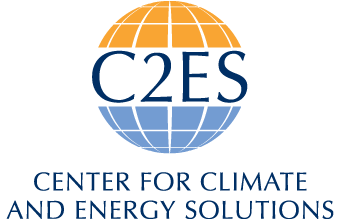
Press Contact
Tim Carroll, press@c2es.org
For Immediate Release
July 1, 2025
Latest Model Outlines Job Losses, Economic Risk in Final Senate Reconciliation Bill
New Analysis: 1.6 Million Jobs & $290 Billion at Stake While Electricity Costs Rise
WASHINGTON—Today, following passage of the budget reconciliation bill in the U.S. Senate, the Center for Climate and Energy Solutions (C2ES) and Greenline Insights released new analysis on the Senate’s final changes to the technology neutral (45Y and 48E) clean electricity tax credits, outlining severe economic risks, job losses and rising electricity costs as demand grows across the nation.
The new analysis compares current policies under the Inflation Reduction Act to the final Senate bill text which would, if enacted, raise barriers to deployment and undercut the long-term effectiveness of clean energy incentives.
If enacted as currently passed by the Senate, these changes would result in steep GDP and job loss over the next ten years:
- U.S. Jobs Lost: 1,685,476 jobs
- U.S. Wages Lost: $197 billion
- U.S. GDP Lost: $290 billion
- US Emissions Increase: 8% in annual economy-wide emissions (2035)
Further, the new proposal would raise electricity prices across the nation due to the loss of new capacity. Annually in 2035, the proposal would result in:
- Electricity Price Increase: 4% per MWh
- Utility-Scale Solar Capacity Lost: 81.0 GW
- Land-Based Wind Capacity Lost: 173.9 GW
- Battery Storage Capacity Lost: 5.5 GW
- Electricity Sector Emissions Increase: 61.7%
The current technology neutral clean electricity tax credits will spur investments across the country in innovative and growing clean energy technologies, including advanced nuclear deployment, geothermal expansion, battery production for grid storage, as well as continued growth in wind and solar, which are best positioned to meet near-term demand while keeping prices low.
These credits are critical to investment and job creation—projected to catalyze $500 billion in investment by 2030. Restrictions limiting their use proposed by the Senate could instead throttle that economic opportunity as demonstrated by this new analysis, slowing the addition of power capacity right as demand accelerates.
The production and investment tax credits for solar and wind are eliminated for projects beginning construction more than one year after enactment, as proposed in the Senate bill; if construction begins later, projects must be placed in service by the end of 2027 to retain full credit value. In addition, foreign entity of concern (FEOC) restrictions disqualify projects for all technologies from receiving full credits if they fail to meet minimum non-FEOC content thresholds; these restrictions apply to projects that begin construction after December 31, 2025. Although both policies apply based on construction start dates, their impacts begin to affect deployed capacity in 2028 and 2029, respectively, assuming an approximately two-year lag between construction and in-service. The analysis focuses on the impact of these changes on solar, wind, and storage.
In many cases, developers may be required to demonstrate supply chain relationships or ownership structures that are difficult to verify—especially for other grid-firming technologies such as nuclear and geothermal, where domestic content and FEOC compliance guidance remains limited.
To speak with a C2ES expert, contact Tim Carroll at press@c2es.org.
###
